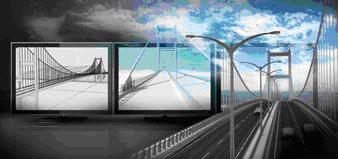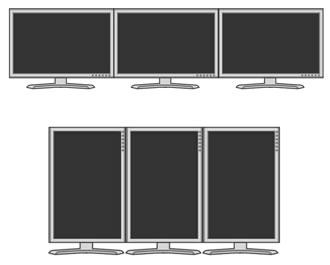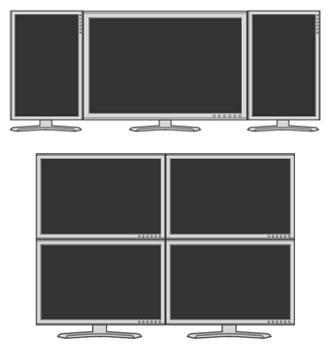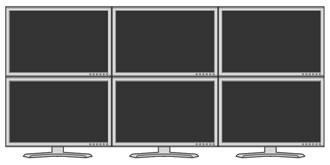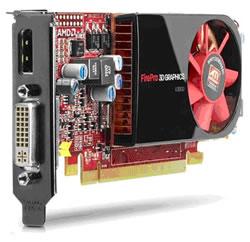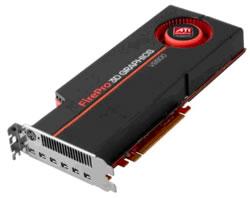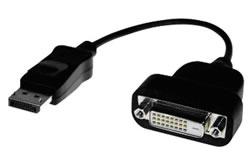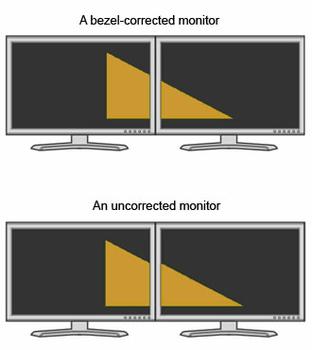Overview
Have you ever felt like you've run out of space on your desktop? Do you ever get sick of 'alt-tabbing' between multiple windows just to try and find the program that you're looking for? Unfortunately, even high-resolution monitors don't always have enough space to let you get everything done. That's where multi-monitor systems come into play, and nothing makes that easier than AMD's Eyefinity.
This technology lets you combine two, three, four, five or even six monitors to create one giant workspace. You can then spread programs across the displays, seamlessly move different programs from one part of the desktop to the other and generally experience a whole new level of productivity.
While you may not realise it if you're used to working on a single monitor, using multiple displays gives a sense of freedom that is difficult to give up once you've tried it. However, though Eyefinity is easy to configure, there are still a few things to consider when planning your new multi-monitor workstation.
How many monitors?
In theory, you can combine any number of monitors - up to six - of almost any size and resolution, but certain Eyefinity configurations are recommended as they will offer the best experience.
If you're looking at using three monitors, the most typical arrangement is a landscape 3x1 array. This can support resolutions of up to 7,680x1,600px, or three 27in or 30in monitors with a resolution of 2,560x1,600px. If you need a taller rather than wider configuration, the monitors can be rotated to create a portrait 3x1 array with a resolution of up to 4,800x2,560.
Lastly, you can create a three-monitor configuration using a single high-resolution 2,560x1,600px display flanked by two monitors of any resolution arranged in portrait. This sort of arrangement will be especially useful if you require a lot more space on the central monitor than on the sides, or already have two lower-resolution screens at hand.
Sometimes, though, even three monitors won't be enough. AMD also recommends four- and six-monitors set-ups for unparalleled productivity. Four screens should be arranged in a 2x2 array - or two separate 2x1 arrays for separate design and review work - for a maximum screen resolution of 5,120x3,200px. Six monitors, on the other hand, should be arranged in a 3x2 array with a maximum resolution of 7,680x3,200px.
Obviously, the resolutions listed are just the maximum that the video cards support, and monitors of any resolution - down to as low 800x600px - can be used. There are also plenty of other configurations that are possible with Eyefinity, even if they aren't symmetrical.
Which monitors are best?
AMD suggests using identical monitors that support the DisplayPort interface and have thin bezels - the plastic surrounding the screen - to enable a superlative Eyefinity experience. The best options for this are the 23in Samsung MD230 (1,920x1,080px), 24in HP DreamColor LP2480zx (1,920 x 1,200) and the 27in Dell UltraSharp U2711 (2,560x1,440).
The technology is also about enabling affordable multi-monitor set-ups, and is compatible with almost any display, including those that you probably already have. While 30in screens will offer the most desktop real-estate, a single ultra-high-resolution model can often cost more than three high-quality 24in displays operating at a slightly lower resolution.
Graphics-cards, dongles and stands
Obviously, to enable Eyefinity technology, you'll need a compatible video card from AMD. All of the current-generation FirePro professional GPUs support multi-monitor configurations, but the number of displays that they can drive will vary from model to model.
The entry-level FirePro V3800, for instance, can power two monitors. If you want to work across three screens, you'll need at least a FirePro V4800, V5800 or V7800, each of which feature a single DVI output and two DisplayPort connectors. If you want to run four displays, you'll need to invest in the quad-output FirePro V8800, while only the FirePro V9800 is capable of driving five- and six-monitor configurations.
Of course, consumer AMD Radeon 5800-series video cards are also Eyefinity-enabled, though they don't offer the computational efficiency and accuracy of the professional GPUs.
Each of these cards features at least one DisplayPort connector. This may be a problem if your workspace is made up of older monitors that don't support the interface. All is not lost, though, as it's possible to purchase Eyefinity-certified DisplayPort-to-DVI or VGA adapters - known as dongles -that will allow these high-end graphics-cards to be used with the older monitors. In fact, all FirePro graphics cards ship with at least one of these adapters.
Lastly, you might want to invest in a monitor stand. Several companies make special stands that can support three, four or even six monitors. Most normal displays - as long as they have a VESA-mounting interface - can be installed on one of these, which will save space, create a more seamless Eyefinity workstation and allow monitors to be stacked on top of each other.
Setting it all up
Once all of the monitors are plugged into the graphics card, the system is essentially ready to go. Now all it takes is a quick bit of software configuration and the multi-monitor workstation will be finished. The settings are all contained in the ATI Catalyst Control Centre (CCC) software. From here, the displays can be virtually arranged to match the physical arrangement and sorted into different workgroups.
The final step is known as bezel compensation. Even the best monitors will have a thin bezel separating the workspace. Rather than having programs, windows and work jumping magically over the bezel - distorting anything spread across two screens - it's possible to extend the desktop behind the bezel. While some content will be lost between screens, it will create a much more natural desktop.
Benefits and Uses
Almost anyone working at a computer will see the benefits of a multi-monitor environment. Those who work in computer-assisted design or engineering, graphic design, digital content creation or any sort of visualisation work will find the extra workspace especially useful.
AMD has even spent time working with developers to make sure that certain software packages are specifically optimised to make the most of Eyefinity. These include Autodesk AliasStudio and 3ds Max, Dassault SolidWorks, PhotoView 360, VISI Machining and Siemens NX and Teamcenter, to name just a few.
But Eyefinity is about more than just work. It can also be used to play the latest games in stunning resolutions - made possible exclusively with AMD video cards



